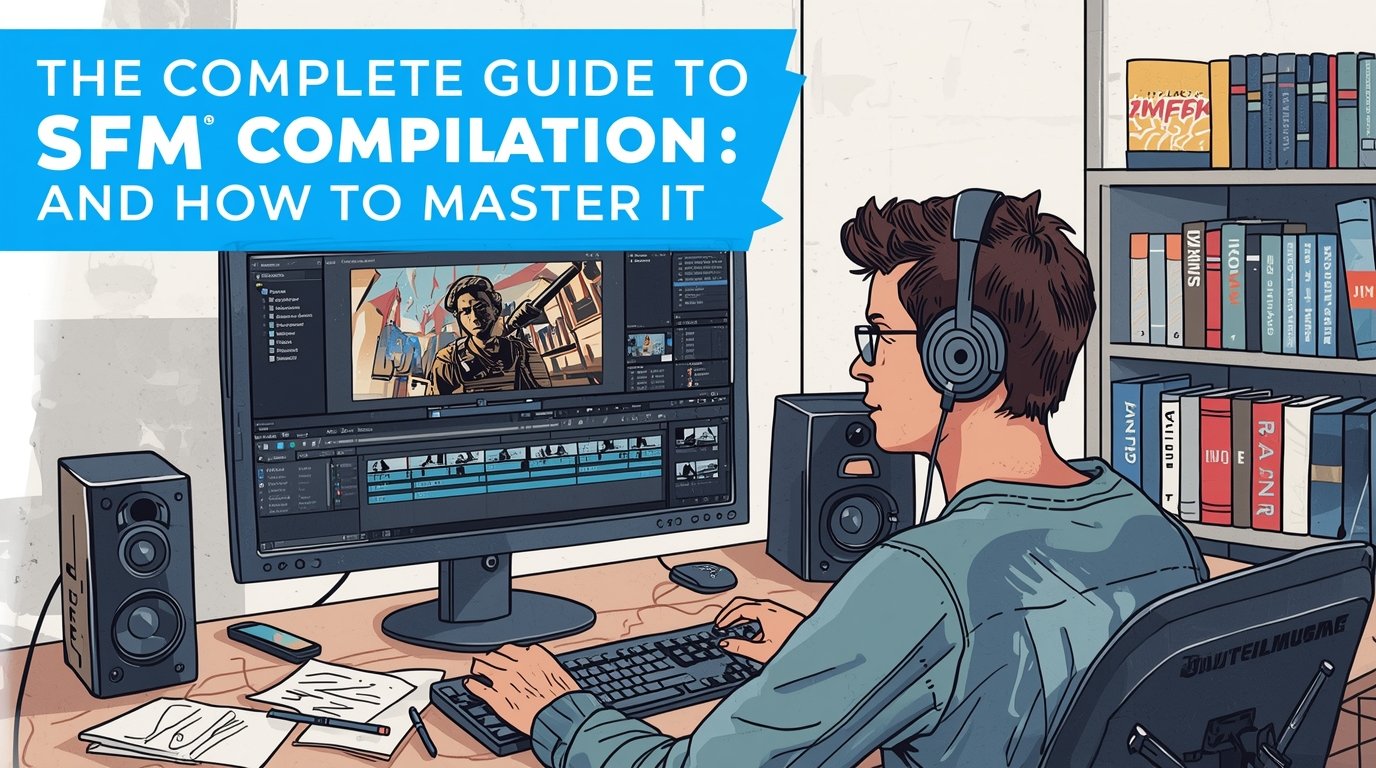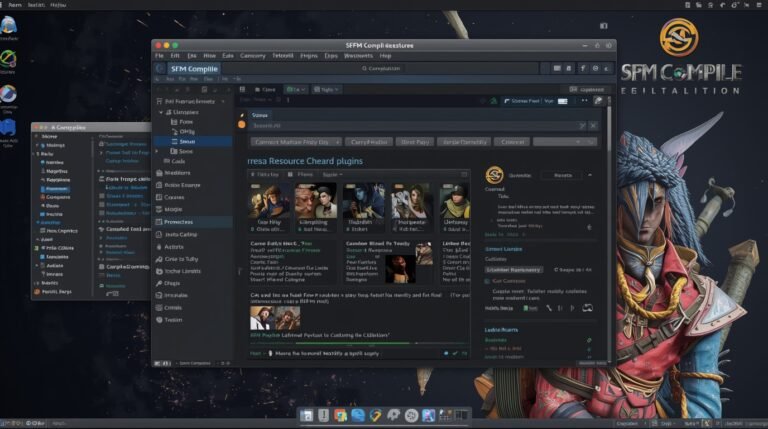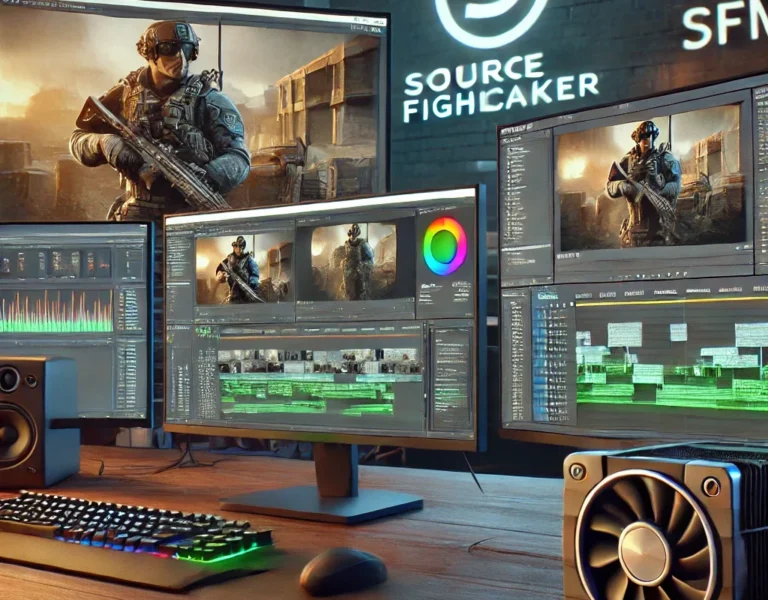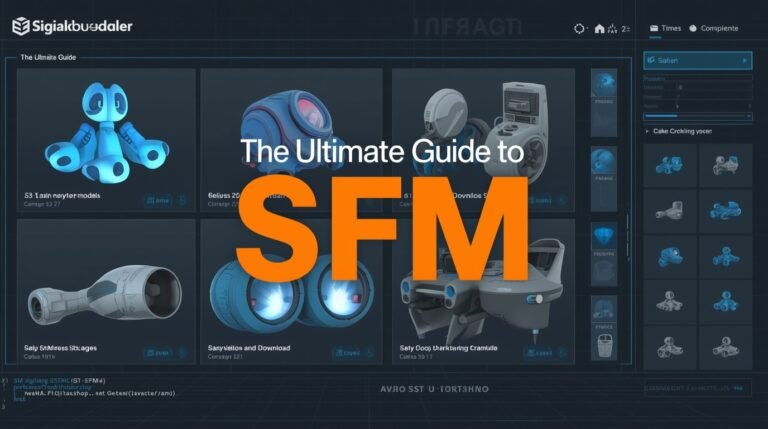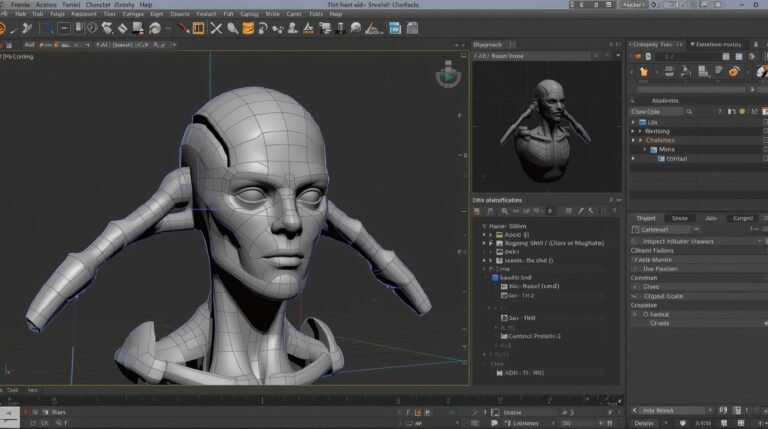The Complete Guide to SFM Compilation (and How to Master It)
If you’ve ever been curious about SFM compilation, this post is for you. Whether you’re a first-time animator or an experienced modder, you’ll find value here. I’ll walk you through what “sfm compile” means, show you how to build your own compilations (of animations, clips, assets), and share tips to make your work shine. Let’s dive in.
What Is SFM Compilation? (And Why It Matters)
SFM (Source Filmmaker) is Valve’s free animation and film‑making tool, built on the Source engine.
When people talk about SFM compilation, they mean one of two related things:
-
Compiling assets/models/textures/maps (so SFM can use them).
-
Rendering or exporting your project into a video or image sequence (so you can share it).
In many artist discussions, compile becomes shorthand for “turn my animations into a final video” or “make my custom models usable in SFM.” The distinction matters, so we’ll treat both meanings carefully throughout.
Why You Need to Understand SFM Compilation
Without proper compilation:
-
Your custom models won’t load or preview correctly in SFM.
-
Textures may appear broken (pink/black) or be missing altogether.
-
Your exported video may lag, lose audio sync, or suffer from poor quality.
By mastering compilation, you ensure your work is polished, usable, and shareable.
1. How Compilation Works in SFM: Assets, Formats & Tools
1.1 Asset Types & Their Compiled Formats
| Asset Type | Raw / Authoring Format | Compiled Format | Purpose |
|---|---|---|---|
| Model (mesh, rig) | .SMD, .DMX, .FBX |
.MDL (+ .VTX, .PHY, .VVD) |
Animatable 3D object |
| Texture / Material | .PNG, .TGA |
.VTF + .VMT |
Surface maps, shader info |
| Animation | .SMD, .DMX |
Embedded in MDL or separate sequences | Motion data |
| Map / Scene | .VMF |
.BSP (plus lighting data) |
Environment/level |
To get an asset from your 3D program into SFM, you must compile it properly.
1.2 Tools Involved: Crowbar, Studiomdl, VTFEdit
-
Crowbar: A Very popular tool for model compilation. It handles compiling SMD/DMX to MDL and decompiling existing models.
-
Studiomdl: The tool in the Source SDK that actually does the heavy lifting under the hood for models.
-
VTFEdit: Converts common image formats (PNG, TGA) into
.VTF(Valve Texture Format), used alongside.VMT(Valve Material) files.
These tools often work together: Crowbar calls studi o mdl, VTFEdit handles textures.
1.3 The QC File (Script) The Blueprint
A The .QC file is a text script that tells the compiler how to build your model:
-
Model name
-
Paths to meshes/animations
-
Physical / collision models
-
Materials and texture directories
For instance:
That tells Crowbar / studi o mdl what to package and where. If paths or syntax break, the compile will fail or drop textures.
2. Step-by-Step: Compile Assets for SFM
2.1 Setup Folder Structure & Organize Files
Create a clean directory layout:
This clarity helps keep relative paths in your QC files sane.
2.2 Convert Textures → VTF & VMT
-
Open your image (PNG/TGA) in VTFEdit
-
Adjust options (compression, transparency)
-
Save as
.VTF -
Create
.VMTfile beside it, with material properties (shader, surface parameters)
If you misname or mispath a .VMTYour model will show pink/black or missing textures.
2.3 Write & Validate QC Script
-
Use a simple starter QC and test small pieces first.
-
Validate syntax, relative paths, and case sensitivity.
-
If errors occur, examine the compile log for missing files or broken paths.
2.4 Run the Compiler (Crowbar / Studiomdl)
-
Load your QC file in Crowbar.
-
Set “Game type” or “Target” to Source Filmmaker.
-
Choose the output folder (typically
usermod/models/). -
Hit Compile.
If all goes well, you’ll see .mdl, .vvd, .phy, .vtx appear in the output.
2.5 Test in SFM
-
Launch SFM and navigate to your model browser.
-
Insert your model into a scene.
-
Check materials, pose, animations.
-
If textures are broken or models glitch, go back and fix paths or compile settings.
A user on Reddit described a similar process for importing Garry’s Mod models into SFM. For each model, he compiled it, then moved it into $usermod/models and tested it in SFM
3. Rendering / Exporting (Compiling) the Final Video or Image Sequence
Once your scene is ready in SFM, you need to compile your movie (i.e., export it).
3.1 Export Options
-
Movie / AVI export: A direct video file.
-
Image sequence: Exports each frame (e.g.
.TGA) which you stitch together later in editing software.
The image sequence route gives more flexibility (lossless frames, post effects), but requires an external tool to combine into a video.
3.2 Export Settings You Must Fine-Tune
| Setting | Importance / Tip |
|---|---|
| Resolution / Aspect | Match target (1080p, 4K, etc.) |
| Frame rate (fps) | 24 / 30 / 60 depending on style |
| Codec / Compression | H.264 or uncompressed, depending on quality needs |
| Anti-aliasing / Sampling | Reduce jagged edges |
| Motion blur, depth of field | Add cinematic polish |
| Ambient occlusion/lighting passes | Adds realism |
| Output path/filename | Keep organized |
After you export, review the video fully—check for visual glitches, audio sync, and texture flicker.
According to one guide, rendering as an image sequence + composing in external software results in higher fidelity than direct exports.
4. Examples, Case Studies & Community Insights
4.1 Community Wisdom from Reddit
“The official Valve tutorials are on the Source Filmmaker YouTube channel… the Graph Editor tutorial is not good look elsewhere.”
“I made an animation in Blender and I want to import it into SFM… people mention DMX or SMD files but I’m not sure how it works.”
These quotes show how newcomers frequently grapple with model/animation transfer and find community tutorials more helpful than official docs.
4.2 Real Project: Fan Animation / Memes
Someone’s first SFM animation used meme source audio, then keyframed bullet cases manually. The poster admitted they later learned you could use particle systems instead. Their primary feedback:
-
Lip sync was stiff
-
Timing was messy
-
Colors were pale
That’s exactly what you avoid when you master correct compilation and rendering. Reddit
4.3 Compiling Maps (Environments)
If you build or import custom maps (e.g., from CS: GO or GMod) into SFM:
-
Use Hammer Editor (
.vmf) -
Compile to
.bspusing VBSP / VVIS / VRAD -
Include the
.bspin your SFM path -
Beware of lighting issues and specular artifacts (e.g., glow on walls). Users often fix weird glowing by entering console commands like
mat_specular 0and rebuilding cubemaps.
5. Common Errors & Troubleshooting
Here are frequent issues and solutions when dealing with SFM compilation:
| Error / Symptom | Cause | Fix / Suggestion |
|---|---|---|
| Pink/black textures | .VMT/.VTF not loaded or wrong path | Check paths, names, and VMT linking |
| QC syntax errors | Typos or bad paths | Use logs to identify missing files |
| Compilation failure in Crowbar | Wrong “Game target” or missing dependencies | Ensure “Source Filmmaker” is set |
| Audio not included in exported video | Sound not embedded or timeline mismatch | Re-check audio settings and frame ranges |
| Flickering lights or specular glow | Lighting artifact or cubemaps issues | Use commands like mat_specular 0 and rebuild cubemaps |
| Crashes in SFM when loading models | High-poly models or missing dependencies | Reduce poly count, debug one model at a time |
If you hit an error, always check the log — it typically points exactly to which file or line failed.
6. Advanced Tips to Elevate Your SFM Compilation Work
-
Batch compile/automation: Use scripts or
.batfiles to compile many models or maps at once. -
Use Levels of Detail (LOD): Lower detail versions of models for background scenes to reduce strain.
-
Merge textures/atlases: Fewer material calls = better performance.
-
Version control & backups: Mistakes happen; always keep backup copies.
-
Test early & often: Compile small test parts before doing full sequence renders.
-
Cohesive theming: For an “SFM compilation video” or montage, pick one theme or aesthetic so it feels unified.
-
Optimize render settings: Turn off unnecessary passes, sample only what matters for your style.
-
Use community assets wisely: Attribute, verify licenses, and avoid using proprietary resources without permission.
7. Putting It All Together: How to Build an SFM Compilation Video
When people refer to an “SFM compilation” video, they mean a montage or series of clips (funny, action, memes) made with SFM assets.
Here’s how you might assemble one:
-
Plan a theme (e.g., funniest TF2 moments, horror scenes, epic fights)
-
Collect or create clips: each must be pre‑rendered or ready in SFM
-
Render each clip cleanly using the export/compile steps above
-
Edit & stitch into one video (using Premiere, DaVinci, etc.)
-
Add transitions, music, sound FX, captions
-
Export the final master video
-
Upload with good SEO title, thumbnail, and tags (e.g., “Best SFM Compilation 2025”, “Funny SFM Moments”)
Because each clip was compiled properly, your final video avoids texture glitches, audio desync, or flickering.
Conclusion
Mastering SFM compilation is the difference between amateurish glitches and polished, share‑worthy animation. Whether you’re preparing models and textures to load into SFM or rendering your final video, the process demands careful structure, correct paths, the right tools, and plenty of testing.
With the steps above, organizing assets, writing QC, using Crowbar/VTFEdit, compiling models, bumping maps, and finally rendering your scenes, you’ll dramatically reduce errors and produce smoother results.
